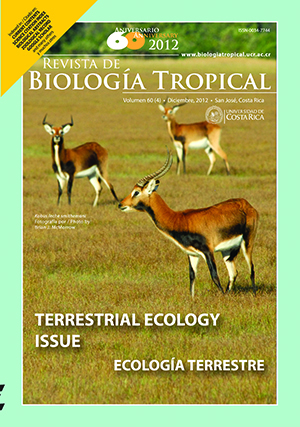Resumen
La presencia de oligoquetos en los ecosistemas puede indicar fertilidad del suelo, ya que estos organismos transportan, mezclan y entierran los residuos vegetales de la superficie al interior del suelo. Se caracterizó la comunidad de oligoquetos bajo sitios con diferentes periodos de establecimiento y manejo de plantaciones de Eucalyptus grandis, sin vegetación (SV), con cinco años en producción (Euc) y vegetación secundaria con 15 años (Acah) que han pasado por el proceso de tumba y quema en suelos de Acri- sol en Huimanguillo, Tabasco; y se analizaron las propiedades físicoquímicas del suelo (D.A., humedad, textura, pH, Ntot, MO, P, K, CIC). La recolecta de lombrices se realizó al finalizar las lluvias (agosto-octubre 2007). Se muestreó en tres parcelas con seis réplicas en cada una. Se encontró que los suelos tenían pH de 3.0-4.5 en los primeros 30cm de profundidad. Los contenidos de materia orgánica (MO) y nitrógeno total (Ntot) fueron significativamente menores en los sitios SV (6-8% y 0.19-0.22% respectivamente) que en Euc y Acah (MO=9-11%; el Ntot=0.27-0.33%). La especie Pontoscolex corethrurus domino en toda el área, presentando mayores densidades y biomasas en Euc (164.4ind/m2 y 36.8g/m2 respectivamente) y Acah (138.7ind/m2 y 19.1g/m2 respectivamente), mientras que en SV sus poblaciones fueron reducidas en un 80%. Se encontró que el sistema Acah sigue presentando rasgos de un sistema perturbado, al no recuperar fácilmente la diver- sidad de oligoquetos y las concentraciones de nutrientes disponibles en el suelo.##plugins.facebook.comentarios##
Descargas
Los datos de descargas todavía no están disponibles.


